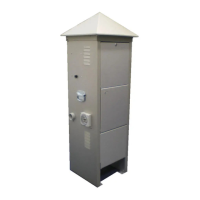HiVol 3000 User Manual 1.7 Installation
25
2.4.5 Filter Selection for PM
10
and PM
2.5
sampling
Filter selection for PM
10
and PM
2.5
sampling is more critical than for
TSP sampling. Any filter that is prone to artefact formation and adds
substantially to the mass gain is not acceptable. This problem is
greater for PM
10
/PM
2.5
sampling, due to the smaller mass of
particulate matter collected and hence artefact formation becomes
more significant.
If sampling in regions that may experience acid gases such as
sulphur dioxide or nitrous oxides, then use of a neutral filter media
such as quartz is recommended.
Teflon-coated glass fibre filters also have low artefact potential,
however they may experience over-loading in heavy particulate
loading situations.
The major disadvantage of quartz filters is their poor tensile strength
and poor handle ability whereas teflon-coated glass fibre has
excellent strength and handle ability.
The integrity of the selected filter media should be assessed by
handling, weighing and installing on an inoperative sampler (ie.
field blank). The blank filters should be treated identically to sample
filters except no air sample is passed through them.
High volume filter media are available from a number of
commercial suppliers. The choice will depend upon the specific
analytical requirement on the collected particulate matter.
It is important that the filter medium selected is capable of
maintaining a flow rate of at least 1.13m
3
/min at all times
throughout a 24 hour sampling period.
The minimum collection efficiency must be 99 percent as
determined by the DOP test (ASTM-2986) for particles of 0.3 μm
diameter.

